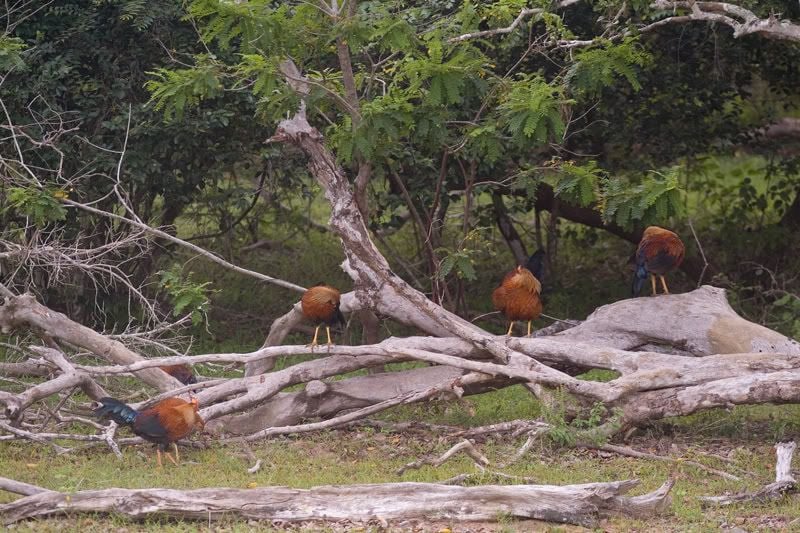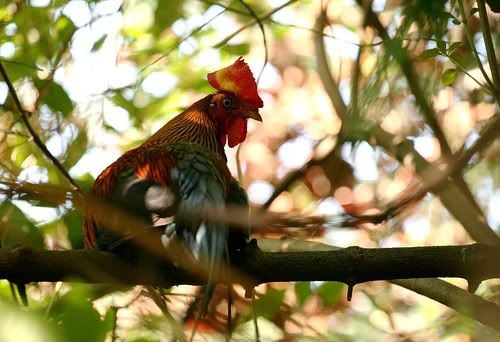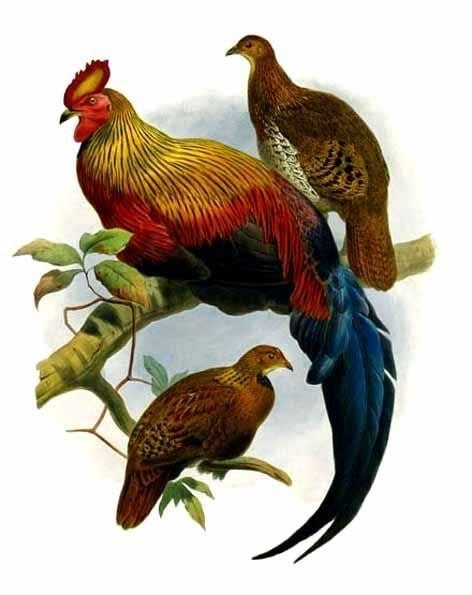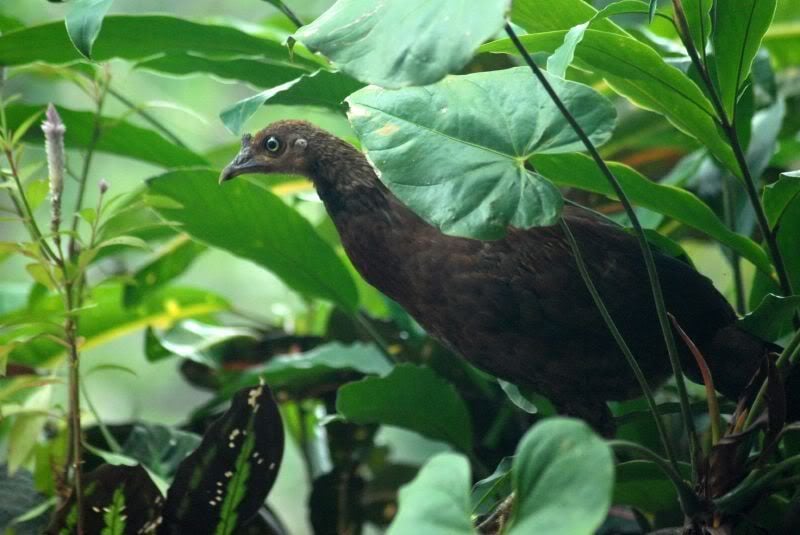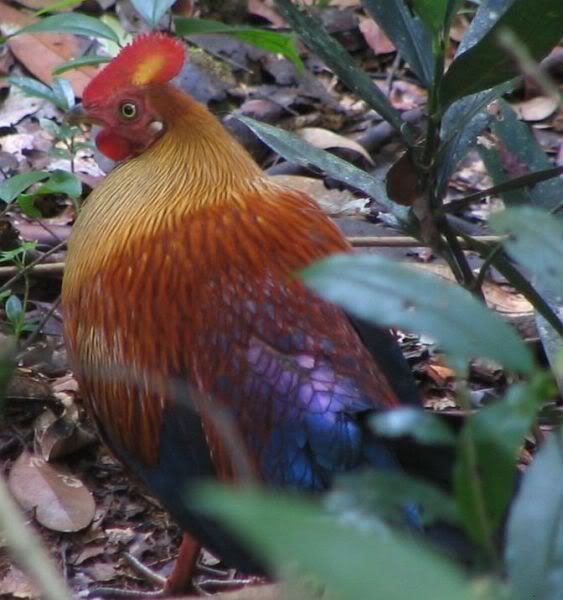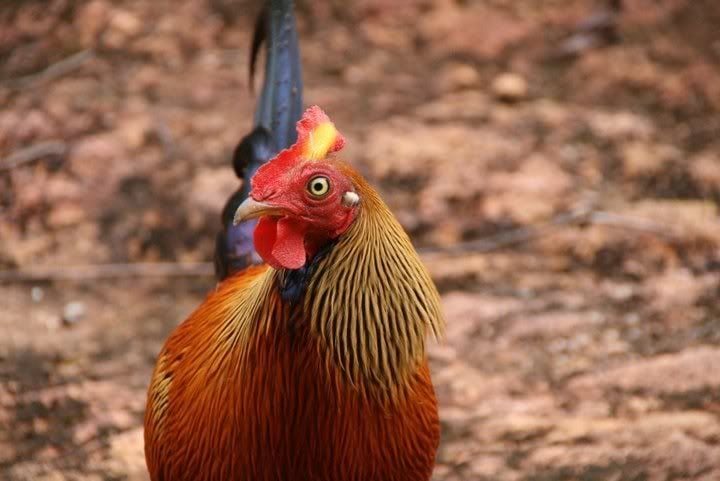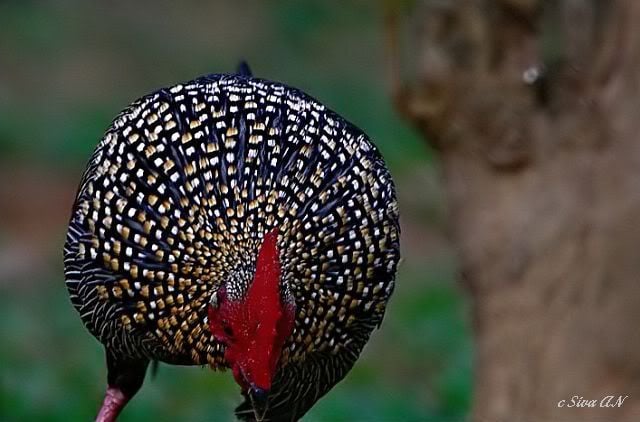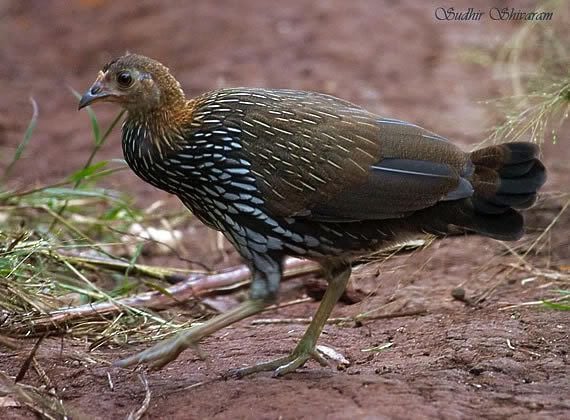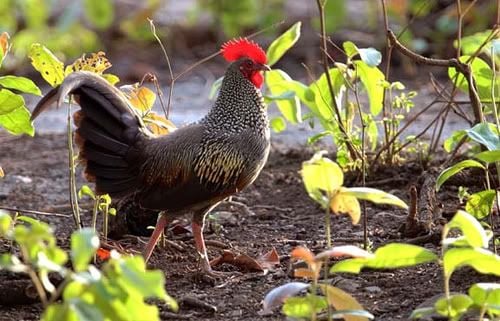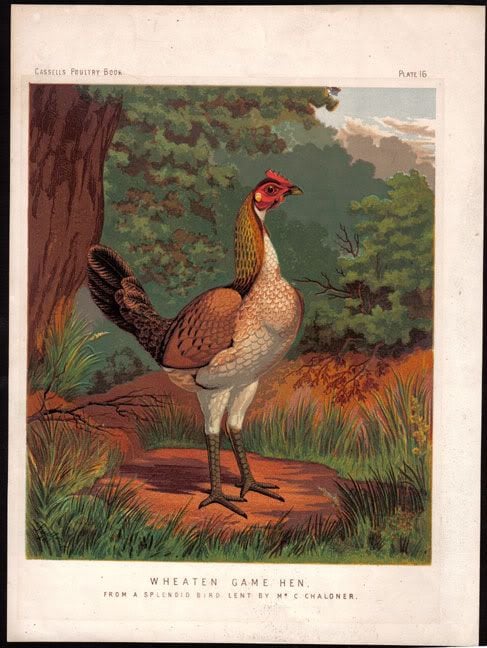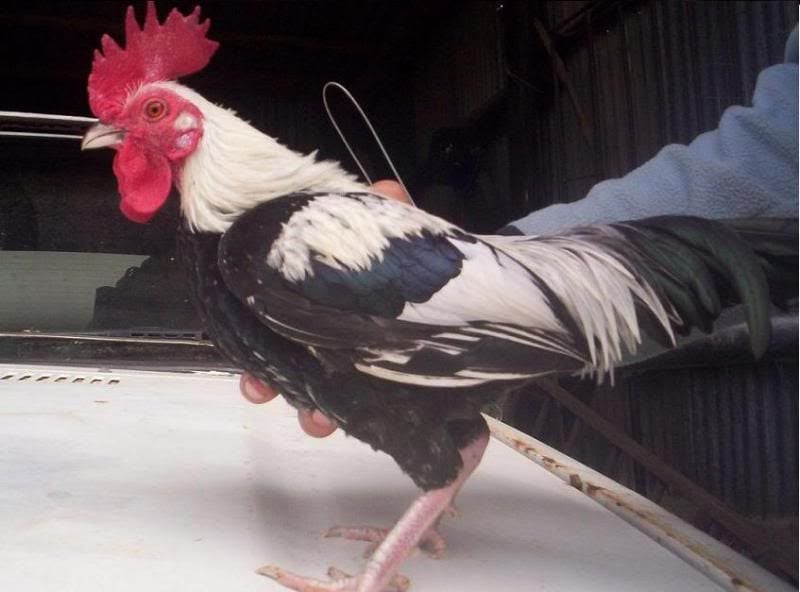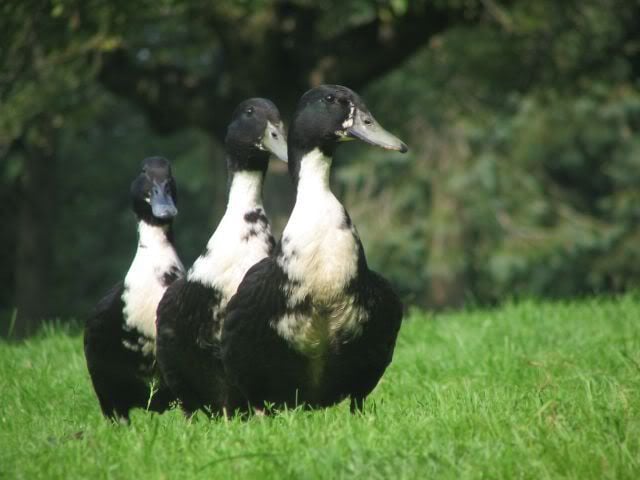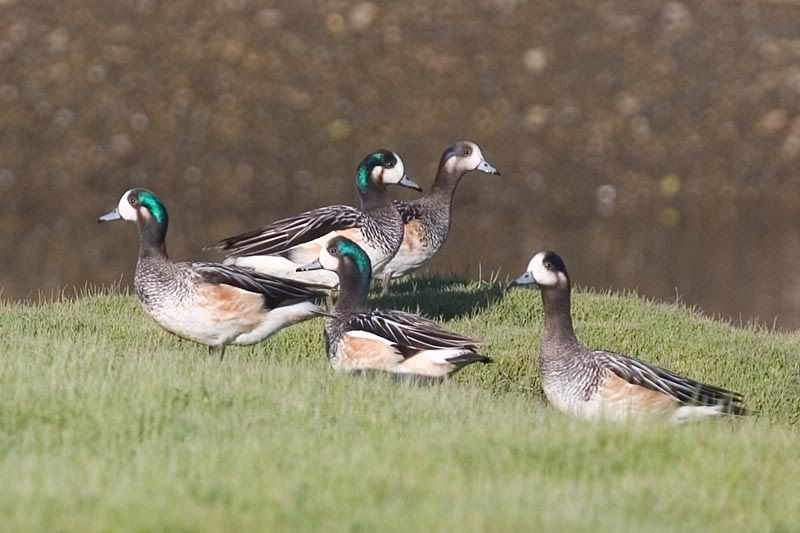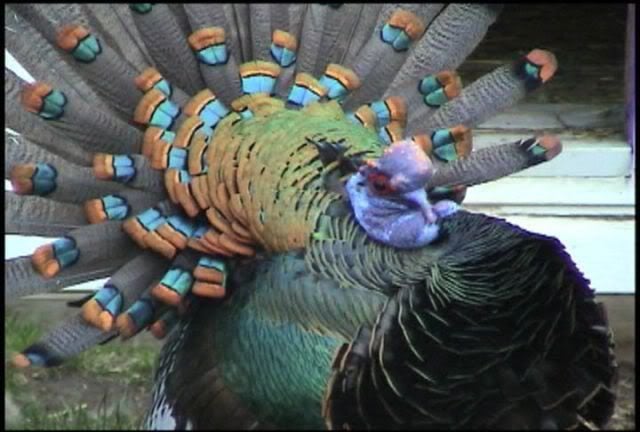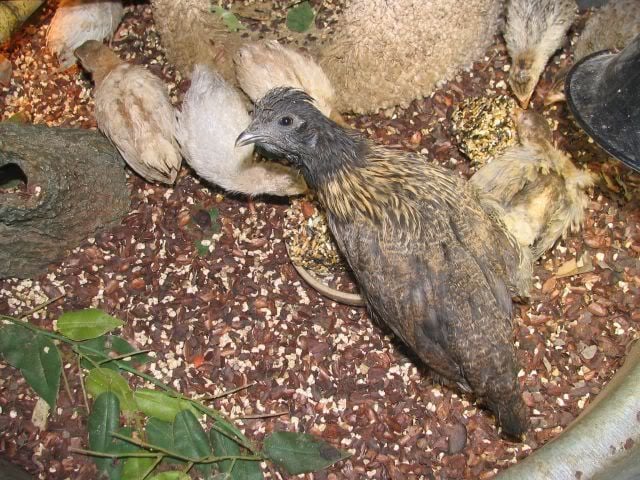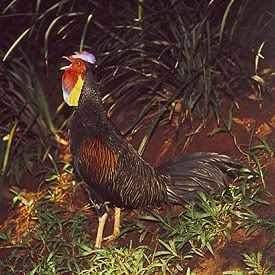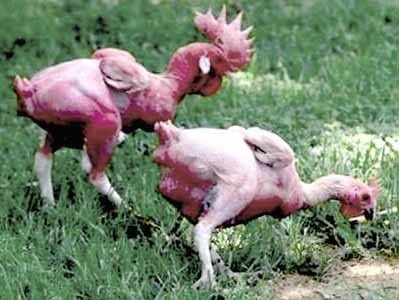I'm not sure where to post this- hope this is the right place.
As some of you are aware, I started an animal nutrition company in 2003.
We sell our products through several distributor chains like Southern States, Agway and Murray McMurray.
I recently wrote an article about the history and conception of our products which is designed to provide education regardless of whether the reader decides to purchase our products. Our objective in starting the Farmer's Helper product line is to educate people on how they can save money while helping to optimize the health of their flocks and streamline management at the same time.
Now is the time of year when everyone is struggling to get ready to hatch chicks and trade/sell stock or just clean and maintain their henhouse/flock.
The more I speak with small farmers raising laying hens the more I realize how important it is to get the word out on the methods that we have discovered to help poultry farmers become more efficient stewards.[/b]

Javanese Green Junglefowl are native to the island of Java, Komodo, Flores and Timor. The Araucana inherited its genes for tinted eggs from this species.
As some of you are aware, I started an animal nutrition company in 2003.
We sell our products through several distributor chains like Southern States, Agway and Murray McMurray.
I recently wrote an article about the history and conception of our products which is designed to provide education regardless of whether the reader decides to purchase our products. Our objective in starting the Farmer's Helper product line is to educate people on how they can save money while helping to optimize the health of their flocks and streamline management at the same time.
Now is the time of year when everyone is struggling to get ready to hatch chicks and trade/sell stock or just clean and maintain their henhouse/flock.
The more I speak with small farmers raising laying hens the more I realize how important it is to get the word out on the methods that we have discovered to help poultry farmers become more efficient stewards.[/b]
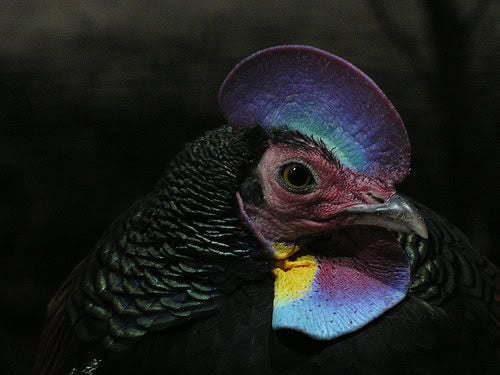
Javanese Green Junglefowl are native to the island of Java, Komodo, Flores and Timor. The Araucana inherited its genes for tinted eggs from this species.
Having grown up on a working ranch and homestead that has been in the family since the late 1800s, I have always lived and worked with livestock, including poultry. It was not until my college years, when I worked for the Wildlife Conservation Society and studied animal nutrition and veterinary science that I learned just how inefficient and potentially dangerous many of the traditional methods of maintaining poultry actually are. This realization came hand in hand with a management crisis, characterized by the cycle of disease and infection inadvertently perpetuated through the use of inefficient feeds.
In college, I became the steward of a large collection of rare and invaluable wild fowl including pheasants, junglefowl and peafowls. Their management seemed straight forward enough. The birds are all related to the domestic chicken; indeed, the junglefowl is the wild ancestor of the domestic chicken. I was collecting eggs and raking the henhouse from age four or five onwards. Nevertheless, we learned that managing wild species in the same manner as domestic poultry is completely inappropriate and from that lesson, we realized that many of the time-honored management practices of keeping domestics should also be re-evaluated and re-assessed.

Green Junglefowl can alter their appearance in the blink of an eye by shifting the pigment from their bare facial skin. They use their vivid faces to communicate long distance to other members of their large social aggregations. The males can also expand or retract this surface area accordingly. A territory holding male may keep his face deep crimson red and his gular lappet will burn a luminescent yellow and blue. A subadult male like the bird in this photograph is going to try and appear as non threatening and non confrontational to older birds in its flock as possible. It will also spend more time perching and in doing so, it acts as sentinel for the whole family.
While the captive populations of wild species are endangered from lack of genetic diversity of founders and exposure to disease, domestic poultry populations are burgeoning. There is a renewed interest in backyard poultry, even families living in the suburbs are building chicken coops and farming eggs. The common problem shared by both models of husbandry, however, stems from basic husbandry practices. Failure to sanitize the aviary or poultry yard adequately leads to the same cycle of disease and re-infection in both. Domestics tend to be much less susceptible to infectivity as they have been genetically selected over countless generations to resist disease and thrive in crowded conditions, even on substandard feedstuffs. Nevertheless, bacterial infections, complications of high parasite loads and/or nutritional deficiencies result in less productivity of domestic flocks. If not dealt with in a timely manner, increased mortality results and managers are obliged to purchase new stock. Moreover, the bacterial infections plaguing the birds can become a disease vector for captive wild species and even humans.
Chronic bacterial infections and lack of fecundity in some captive wild species prevent many pairs from reproducing consistently. We experienced the occasional upper respiratory infection, which would linger on for weeks or months and sometimes even kill invaluable stock. Following our vain attempts to treat the symptoms year after year, we decided that preventative measures needed to be our focus proactive management rather than reactive. New enclosures, on new soil, would be constructed, and following strict maintenance guidelines outlined by our veterinary staff and avian pathologists, we would begin again, ostensibly, never to expose our stock to whatever was causing the respiratory ailment.
One of the first things we learned in our stewardship was how inadequate the commercially-available pellets and crumbles were for the vast majority of our wild species. We learned, for example, from a paper on pheasant nutrition authored by zoo nutrition authority Ellen Dierenfeld, Ornithologist Christine Sheppard and Behavioral Ecologist Martin Burnett, based upon the crop contents of Gallinaceous birds collected in the wild over a two hundred year period, that pheasants differ in their ecological niches, suggesting possible unique nutritional needs. Four different ecological/nutritional categories were identified: 1) highly vegetarian, 2) generalist omnivore, 3) primarily insectivore, and 4) partially carnivorous. All of the species kept in captivity, however, from the Golden Pheasant, to the Indian Peafowl, the Satyr Tragopan to the Eared Pheasant, were being fed in essentially the same manner: a pellet or crumble ration described as a generic Game Bird Diet. This feed was originally formulated for the Ring Necked Pheasant, the Bobwhite and the Wild Turkey, all of which are capable of utilizing plant-based proteins, soybean meal and alfalfa for example. This feed is basically identical to layer pellets or turkey crumbles except for the protein concentrations, with the game bird diets containing slightly higher crude protein levels.

Green Junglefowl are unusual amongst Galliform birds in that they are noted island hoppers. It is not unusual to observe a flock of the birds flying over the open sea between islands ten and twenty miles apart.
The physical make up and ingredients of the pellets/crumble is often identical, comprising grain products such as corn fractions, soybean meal, or wheat middlings that are first ground together, and pelletized or baked in heat and pressure processes. The end result is what looks at first glance to be a highly efficient, inexpensive, and palatable pellet or crumble. Upon closer examination, we realized that we may have been naiive at best in our management regime. We filled hoppers with feed and allowed the birds to feed at their leisure. Until we had Mycoplasma infections surface, we thought little of the birds spilling their pellets/crumbles onto the ground. The powdery fines on the bottom of the bags seemed insignificant until we realized that these feedstuffs disintegrate in ambient moisture. The particulate matter was mixing with fecal material, atmospheric dust, and feather dander to produce a thick, acrid and clinging substance we term Poultry Smut, which birds can ingest through normal feeding and preening behaviors. This environmental contaminant gives the aviary and poultry yard its characteristic odor. It is also a perfect breeding ground for Mycoplasma, which can lead to bacterial pneumonia that often kills captive wild species. In treating birds with powerful antibiotics, we run the risk of sterilization or worse yet, creating an antibiotic resistant strain of the bacterium. Birds are infamous for their resistance to treatment. They will often refuse to drink when ill and may die of fright when captured in the hand. In domestic flocks, bacterial pneumonia results in a lack of productivity in afflicted birds. Sick hens dont lay and eventually, the other hens in the poultry yard may also succumb to the infection.

Ayam cemani and Ayam pelung chicks.
In our experience, many of the species suffering from respiratory infections most often were species that typically responded positively to additional vitamins and or amino acids (protein) in their diets. Some species were more likely to become infected because of instinctual foraging behaviors, for example those species that dig with the beak in the substrate and/or those that dig with feet and metatarsal spurs to rake through substrate. Upon suggestion by zoo professionals, we cut back on the portions of pellets, supplemented with an inexpensive dry, extruded dog food (kibble) and took great measures to prevent the birds from dumping feed onto the substrate. We also started using wild bird seed cakes placed on special tables in enclosures as behavioral enrichment for the birds, and noted health and production improvements.

The ancestors of the Araucanian hen came from Easter Island and were transported by Melanesians from Indonesia from Ayam bekisar founders. The only junglefowl that lays tinted eggs with the specific pigment responsible for the blue egg is the Green Junglefowl.
As time passed, I found myself wondering why there was not a better feed on the market and why the foraging behavior of the birds was often completely ignored in their management. If we could create an extruded kibble similar to dog food, formulated expressly for birds, perhaps we would be closer to creating a more economic husbandry protocol. Anyone that keeps poultry is familiar with their capacity to produce copious amounts of sticky, fetid, and nitrogen-rich droppings. These droppings represent wasted crude protein if birds are overfed or fed inappropriately-balanced diets. Couldnt their feedstuffs be put together in such a way that what is ingested is more thoroughly digested and in doing so cut down on the amount of feed required in a day? If the droppings were more consistent and smaller (as they are with birds living in the wild on their natural foods) the sanitation of the henhouse, poultry yard and aviary could be streamlined. If this specially formulated kibble included materials that help absorb mycotoxins, odors, and excess moisture, in addition to providing nutritional balance and behavioral enrichment, both physiological and psychological needs would be met.

Another rare and unusual breed from the Western Hemisphere developed by Indigenous peoples is the Mapuche Huastec.
This breed is black boned and produces turquoise eggs. Researchers believe that this breed, together with the Chihuahua dog ( descended of the Chinese Hairless Dog) may be evidence of an ancient link between China and Mexico. The Huastec was interbred with Mapuche chickens from South and Central America in Pre-Columbian days.
This is when my friend, designer Robert DuGrenier encouraged me to create a special feed cake that would cut down on the waste and dust in feeding, and also make it possible for people that maintain poultry or game birds to leave town for extended periods. We made the first models in Roberts oven, and named them ForageCakes. Charlie Clour and Diane Griswold took us the next step from cottage industry to commercial by helping us streamline our product lines and create new products, as well as maximizing the ingredients necessary in the Farmers Helper
 ForageCakes. Zootrition
ForageCakes. Zootrition
 software creator Ellen Dierenfeld and HMS Zoo Diets President AJ Higginbottom helped us, respectively, to formulate and produce our exclusive Resolution line of extruded kibbles and Farmers Helper product line for sustainable agriculturists.
software creator Ellen Dierenfeld and HMS Zoo Diets President AJ Higginbottom helped us, respectively, to formulate and produce our exclusive Resolution line of extruded kibbles and Farmers Helper product line for sustainable agriculturists.

Turmeric is a member of the Ginger family and is one of the most valuable holistic ingredients you can feed to your poultry to help prevent disease in your flocks. Turmeric is responsible for the golden colour of our feeds.

Our pellets are extruded and produce no waste, dust or mold.
The first of these is Hunter Kibble, which contains farmed catfish meal, zeolite and diatomaceous earth to assist in mycotoxin and ammonia control, antioxidant and naturally anti-bacterial spices (turmeric, cinnamon, and cayenne), as well as elevated levels of dietary fiber, trace minerals in the form of crustacean shell meal, and seven different dried vegetables for carotenoid and nutrient content including water cress, celery, beets, and spinach. How does it work?
Hunter Kibble is a premium product formulated to target the needs of the bird species which subsist on invertebrates and small animals in nature, species that are typically more difficult to maintain under routine captive management protocols. It contains a balanced mix of high quality animal and plant proteins to duplicate nutrients consumed by an omnivore, and high levels of omega-3 fatty acids to support immune and reproductive functions. Probiotics and natural vitamin E support immune function and digestive tract health. The extrusion process itself gelatinizes starches to increase digestibility. Hunter Kibble is used as an integral supplement to the daily maintenance diet for many rare and endangered zoo birds, including the Green and Ceylon Junglefowl, Congo Peafowl, Fireback Pheasants, Flamingos, Shorebirds, and many other wild species field tested in several private facilities.
Once we had trialed the concept in zoo birds, we realized that its greatest potential would be in its utilization in sustainable agriculture applications. We embedded the Hunter Kibble in our custom-made Farmers Helper ForageCakes which are composed of nut pieces, whole seeds and grains, dried fruits, and spices. These special cakes provide behavioral enrichment as well as nutritional supplementation. Many of our farm clients utilize Hunter Kibble to cut feed costs by decreasing the daily rations of maintenance pellets/crumbles or scratch grain by as much as 50%. The Hunter Kibble is fed in a 1:10 ratio (approximately 1 tablespoon (15 g) Hunter Kibble to each 1 cup (~150 g) maintenance feed.
Our next product is the Farmers Helper
 Golden Egg Ameliorated Suet Nugget, made of ground Hunter Kibble, cranberry pulp, calendula, spices, zeolite and diatomaceous earth, and rendered beef suet. Producing an egg involves substantial energy expenditure for the hen, and the final product nurtures the developing embryo through 4 days post-hatch. Diets are designed with both the hen and chicks needs taken into consideration. Thus, the Golden Egg nuggets are formulated to provide increased energy to the egg-producing hen, as well as contribute to a superior, nutrient-rich egg yolk for use by either the chick or human consumers. Another Farmers Helper
Golden Egg Ameliorated Suet Nugget, made of ground Hunter Kibble, cranberry pulp, calendula, spices, zeolite and diatomaceous earth, and rendered beef suet. Producing an egg involves substantial energy expenditure for the hen, and the final product nurtures the developing embryo through 4 days post-hatch. Diets are designed with both the hen and chicks needs taken into consideration. Thus, the Golden Egg nuggets are formulated to provide increased energy to the egg-producing hen, as well as contribute to a superior, nutrient-rich egg yolk for use by either the chick or human consumers. Another Farmers Helper
 ameliorated suet product popular with small farms and aviculturists is called Babycake. This foragecake is formulated specifically for chicks and growing birds but it is also used for breeding pairs. The Babycake is made of ground nut pieces, dried cranberries, DE, zeolite , spices and vitamins. We designed this to assist in taking some of the management stress off keeping chicks and juveniles healthy. Rearing young chicks can be messy and frustrating. A large percentage of chick starter ends up wasted and boredom often results in destructive feather pecking and cannibalism. Used together with your favorite daily maintenance chick starter, our Babycake Supplement brings the free range into the brooder. Farmer's Helper
ameliorated suet product popular with small farms and aviculturists is called Babycake. This foragecake is formulated specifically for chicks and growing birds but it is also used for breeding pairs. The Babycake is made of ground nut pieces, dried cranberries, DE, zeolite , spices and vitamins. We designed this to assist in taking some of the management stress off keeping chicks and juveniles healthy. Rearing young chicks can be messy and frustrating. A large percentage of chick starter ends up wasted and boredom often results in destructive feather pecking and cannibalism. Used together with your favorite daily maintenance chick starter, our Babycake Supplement brings the free range into the brooder. Farmer's Helper
 Babycake Supplements are designed to provide behavioral enrichment; help optimize nutrition and minimize maintenance. Like our other products, the use of this supplement enables the manager to decrease the percentage of maintenance feed put out daily by 50%.
Babycake Supplements are designed to provide behavioral enrichment; help optimize nutrition and minimize maintenance. Like our other products, the use of this supplement enables the manager to decrease the percentage of maintenance feed put out daily by 50%.
We have also created the Farmers Helper
 Ultra Kibble Supplement, a mixture of Hunter Kibble, grains, nut pieces, seeds, ameliorated suet nuggets, and oystershell. This product is designed to be mixed into the daily maintenance diet in a 1:3 ratio (1 part Ultra: 3 parts regular diet by weight). Again, Farm and Collection Managers will see decreases in amounts of ration fed out daily by approximately 50%, due to the superior blend of nutrients, along with dietary fibers in the product (provides gut fill for satiety factors), which enable the birds to utilize feeds more efficiently.
Ultra Kibble Supplement, a mixture of Hunter Kibble, grains, nut pieces, seeds, ameliorated suet nuggets, and oystershell. This product is designed to be mixed into the daily maintenance diet in a 1:3 ratio (1 part Ultra: 3 parts regular diet by weight). Again, Farm and Collection Managers will see decreases in amounts of ration fed out daily by approximately 50%, due to the superior blend of nutrients, along with dietary fibers in the product (provides gut fill for satiety factors), which enable the birds to utilize feeds more efficiently.
Ben Franklin taught us that: An ounce of Prevention is worth a pound of Cure. Our products maximize nutrition, minimize wastage, and reduce the potential for contamination of diets and bird re-infection through ingestion of fecal material.
http://i9.photobucket.com/albums/a83/PiAmoun/Resolutions/foragecakeforchicks.jpg
We bring the Free Range into the Coop

Suboptimal performance of exotic captive Galliforms, managed following routine protocols developed for domestic poultry, pointed towards feed management and nutrition as major underlying factors that could be improved as a means of preventive health care. An ultimate goal of meeting both physiological (nutrition) and psychological (feeding) needs of these special species, through detailed attention to appropriate ingredients, foraging behaviors, and the environment, led to development of the Resolution Kibbles and Farmers Helper Animal Nutrition products. Lessons learned from nature were integrated with help from a team of professionals with expertise in Nutrition, Ecology, Captive Husbandry, Behavior, Feed Production, and Marketing; products were field-tested and formulations revised based on bird response(s). ForageCakes, Hunter Kibble, Golden Egg Ameliorated Suet Nugget, and Ultra Kibble Supplement contain natural ingredients with nutrient profiles reflected in free-range foraging activities. Use of these products in feeding has, in some cases, resulted in a 50% reduction in typical pellet/crumble ration use, as well as production of higher quality and better-colored egg yolks.
Farmers Helper Suggestions for a cleaner and more economic poultry yard:
1. Never feed poultry or gamebirds on the ground. Place no-tip bowls on elevated tables that have been covered with inexpensive, and easily cleaned tablecloth.
2. Place feed in deep dishes on a bed of oystershell and sand.
3. Sterilize water containers every weekend
In college, I became the steward of a large collection of rare and invaluable wild fowl including pheasants, junglefowl and peafowls. Their management seemed straight forward enough. The birds are all related to the domestic chicken; indeed, the junglefowl is the wild ancestor of the domestic chicken. I was collecting eggs and raking the henhouse from age four or five onwards. Nevertheless, we learned that managing wild species in the same manner as domestic poultry is completely inappropriate and from that lesson, we realized that many of the time-honored management practices of keeping domestics should also be re-evaluated and re-assessed.
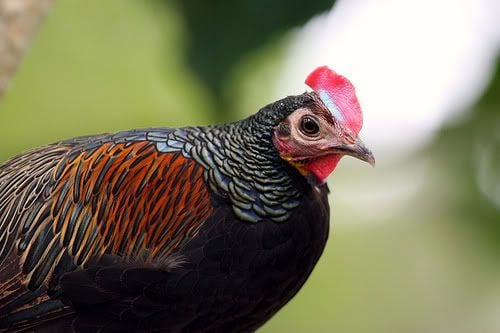
Green Junglefowl can alter their appearance in the blink of an eye by shifting the pigment from their bare facial skin. They use their vivid faces to communicate long distance to other members of their large social aggregations. The males can also expand or retract this surface area accordingly. A territory holding male may keep his face deep crimson red and his gular lappet will burn a luminescent yellow and blue. A subadult male like the bird in this photograph is going to try and appear as non threatening and non confrontational to older birds in its flock as possible. It will also spend more time perching and in doing so, it acts as sentinel for the whole family.
While the captive populations of wild species are endangered from lack of genetic diversity of founders and exposure to disease, domestic poultry populations are burgeoning. There is a renewed interest in backyard poultry, even families living in the suburbs are building chicken coops and farming eggs. The common problem shared by both models of husbandry, however, stems from basic husbandry practices. Failure to sanitize the aviary or poultry yard adequately leads to the same cycle of disease and re-infection in both. Domestics tend to be much less susceptible to infectivity as they have been genetically selected over countless generations to resist disease and thrive in crowded conditions, even on substandard feedstuffs. Nevertheless, bacterial infections, complications of high parasite loads and/or nutritional deficiencies result in less productivity of domestic flocks. If not dealt with in a timely manner, increased mortality results and managers are obliged to purchase new stock. Moreover, the bacterial infections plaguing the birds can become a disease vector for captive wild species and even humans.
Chronic bacterial infections and lack of fecundity in some captive wild species prevent many pairs from reproducing consistently. We experienced the occasional upper respiratory infection, which would linger on for weeks or months and sometimes even kill invaluable stock. Following our vain attempts to treat the symptoms year after year, we decided that preventative measures needed to be our focus proactive management rather than reactive. New enclosures, on new soil, would be constructed, and following strict maintenance guidelines outlined by our veterinary staff and avian pathologists, we would begin again, ostensibly, never to expose our stock to whatever was causing the respiratory ailment.
One of the first things we learned in our stewardship was how inadequate the commercially-available pellets and crumbles were for the vast majority of our wild species. We learned, for example, from a paper on pheasant nutrition authored by zoo nutrition authority Ellen Dierenfeld, Ornithologist Christine Sheppard and Behavioral Ecologist Martin Burnett, based upon the crop contents of Gallinaceous birds collected in the wild over a two hundred year period, that pheasants differ in their ecological niches, suggesting possible unique nutritional needs. Four different ecological/nutritional categories were identified: 1) highly vegetarian, 2) generalist omnivore, 3) primarily insectivore, and 4) partially carnivorous. All of the species kept in captivity, however, from the Golden Pheasant, to the Indian Peafowl, the Satyr Tragopan to the Eared Pheasant, were being fed in essentially the same manner: a pellet or crumble ration described as a generic Game Bird Diet. This feed was originally formulated for the Ring Necked Pheasant, the Bobwhite and the Wild Turkey, all of which are capable of utilizing plant-based proteins, soybean meal and alfalfa for example. This feed is basically identical to layer pellets or turkey crumbles except for the protein concentrations, with the game bird diets containing slightly higher crude protein levels.
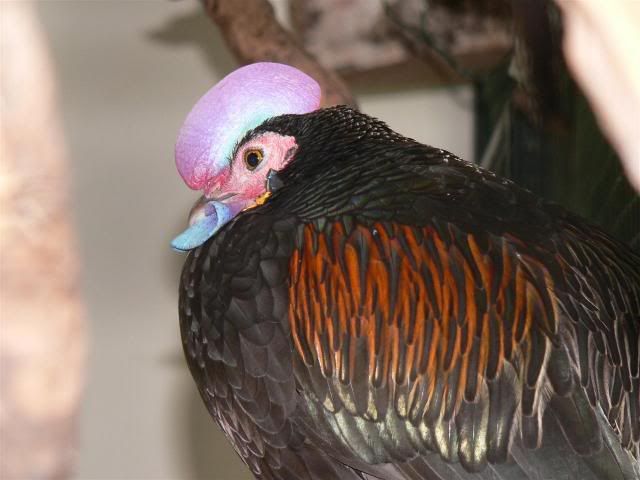
Green Junglefowl are unusual amongst Galliform birds in that they are noted island hoppers. It is not unusual to observe a flock of the birds flying over the open sea between islands ten and twenty miles apart.
The physical make up and ingredients of the pellets/crumble is often identical, comprising grain products such as corn fractions, soybean meal, or wheat middlings that are first ground together, and pelletized or baked in heat and pressure processes. The end result is what looks at first glance to be a highly efficient, inexpensive, and palatable pellet or crumble. Upon closer examination, we realized that we may have been naiive at best in our management regime. We filled hoppers with feed and allowed the birds to feed at their leisure. Until we had Mycoplasma infections surface, we thought little of the birds spilling their pellets/crumbles onto the ground. The powdery fines on the bottom of the bags seemed insignificant until we realized that these feedstuffs disintegrate in ambient moisture. The particulate matter was mixing with fecal material, atmospheric dust, and feather dander to produce a thick, acrid and clinging substance we term Poultry Smut, which birds can ingest through normal feeding and preening behaviors. This environmental contaminant gives the aviary and poultry yard its characteristic odor. It is also a perfect breeding ground for Mycoplasma, which can lead to bacterial pneumonia that often kills captive wild species. In treating birds with powerful antibiotics, we run the risk of sterilization or worse yet, creating an antibiotic resistant strain of the bacterium. Birds are infamous for their resistance to treatment. They will often refuse to drink when ill and may die of fright when captured in the hand. In domestic flocks, bacterial pneumonia results in a lack of productivity in afflicted birds. Sick hens dont lay and eventually, the other hens in the poultry yard may also succumb to the infection.
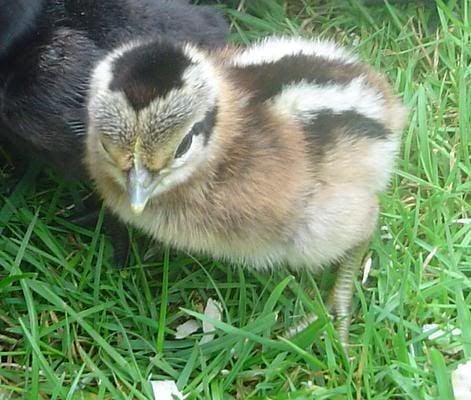
Ayam cemani and Ayam pelung chicks.
In our experience, many of the species suffering from respiratory infections most often were species that typically responded positively to additional vitamins and or amino acids (protein) in their diets. Some species were more likely to become infected because of instinctual foraging behaviors, for example those species that dig with the beak in the substrate and/or those that dig with feet and metatarsal spurs to rake through substrate. Upon suggestion by zoo professionals, we cut back on the portions of pellets, supplemented with an inexpensive dry, extruded dog food (kibble) and took great measures to prevent the birds from dumping feed onto the substrate. We also started using wild bird seed cakes placed on special tables in enclosures as behavioral enrichment for the birds, and noted health and production improvements.
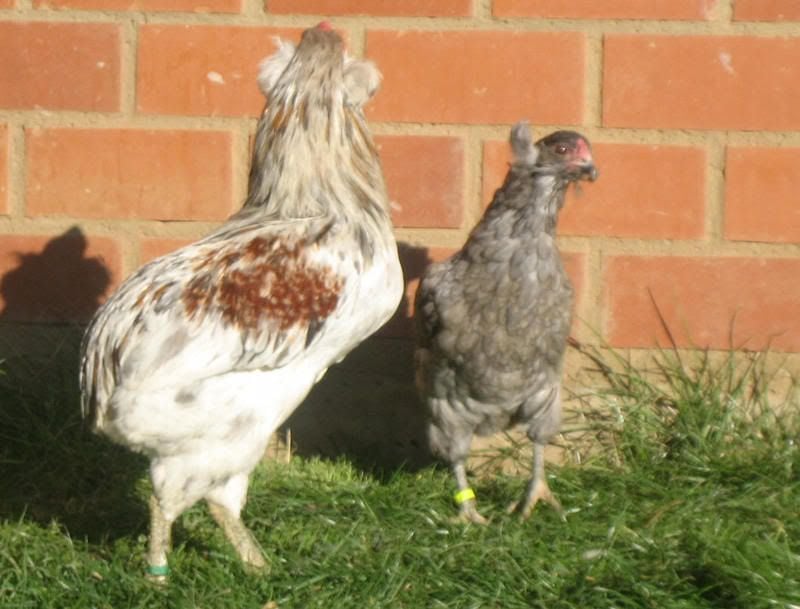
The ancestors of the Araucanian hen came from Easter Island and were transported by Melanesians from Indonesia from Ayam bekisar founders. The only junglefowl that lays tinted eggs with the specific pigment responsible for the blue egg is the Green Junglefowl.
As time passed, I found myself wondering why there was not a better feed on the market and why the foraging behavior of the birds was often completely ignored in their management. If we could create an extruded kibble similar to dog food, formulated expressly for birds, perhaps we would be closer to creating a more economic husbandry protocol. Anyone that keeps poultry is familiar with their capacity to produce copious amounts of sticky, fetid, and nitrogen-rich droppings. These droppings represent wasted crude protein if birds are overfed or fed inappropriately-balanced diets. Couldnt their feedstuffs be put together in such a way that what is ingested is more thoroughly digested and in doing so cut down on the amount of feed required in a day? If the droppings were more consistent and smaller (as they are with birds living in the wild on their natural foods) the sanitation of the henhouse, poultry yard and aviary could be streamlined. If this specially formulated kibble included materials that help absorb mycotoxins, odors, and excess moisture, in addition to providing nutritional balance and behavioral enrichment, both physiological and psychological needs would be met.
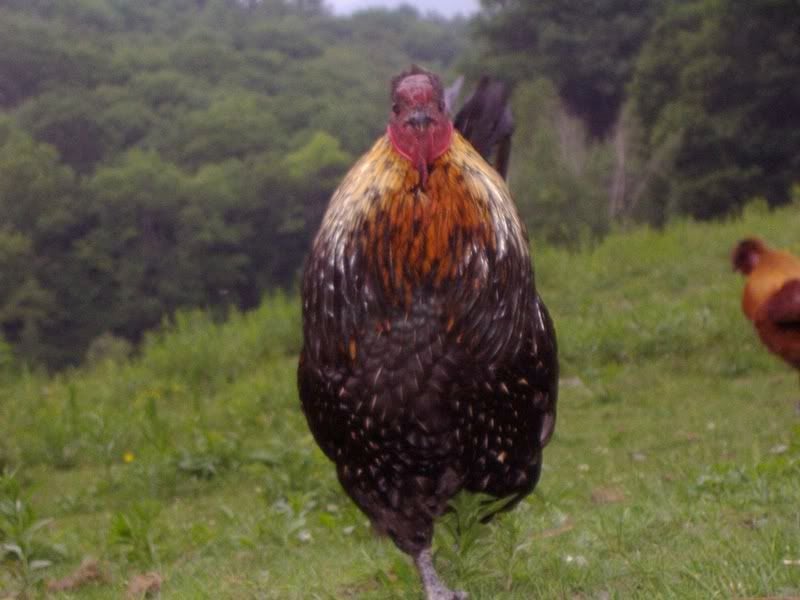
Another rare and unusual breed from the Western Hemisphere developed by Indigenous peoples is the Mapuche Huastec.
This breed is black boned and produces turquoise eggs. Researchers believe that this breed, together with the Chihuahua dog ( descended of the Chinese Hairless Dog) may be evidence of an ancient link between China and Mexico. The Huastec was interbred with Mapuche chickens from South and Central America in Pre-Columbian days.
This is when my friend, designer Robert DuGrenier encouraged me to create a special feed cake that would cut down on the waste and dust in feeding, and also make it possible for people that maintain poultry or game birds to leave town for extended periods. We made the first models in Roberts oven, and named them ForageCakes. Charlie Clour and Diane Griswold took us the next step from cottage industry to commercial by helping us streamline our product lines and create new products, as well as maximizing the ingredients necessary in the Farmers Helper


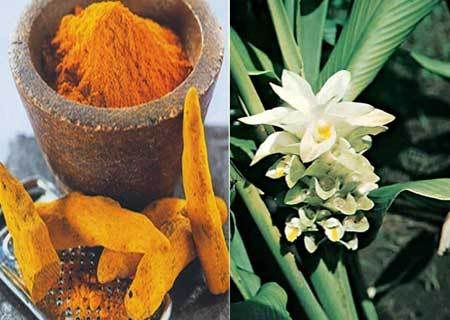
Turmeric is a member of the Ginger family and is one of the most valuable holistic ingredients you can feed to your poultry to help prevent disease in your flocks. Turmeric is responsible for the golden colour of our feeds.
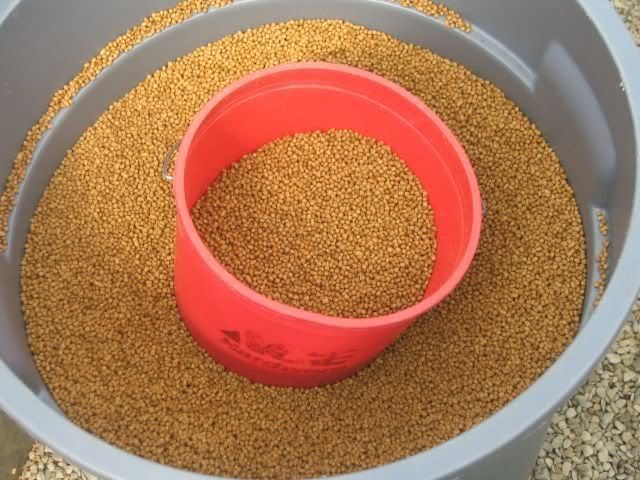
Our pellets are extruded and produce no waste, dust or mold.
The first of these is Hunter Kibble, which contains farmed catfish meal, zeolite and diatomaceous earth to assist in mycotoxin and ammonia control, antioxidant and naturally anti-bacterial spices (turmeric, cinnamon, and cayenne), as well as elevated levels of dietary fiber, trace minerals in the form of crustacean shell meal, and seven different dried vegetables for carotenoid and nutrient content including water cress, celery, beets, and spinach. How does it work?
Hunter Kibble is a premium product formulated to target the needs of the bird species which subsist on invertebrates and small animals in nature, species that are typically more difficult to maintain under routine captive management protocols. It contains a balanced mix of high quality animal and plant proteins to duplicate nutrients consumed by an omnivore, and high levels of omega-3 fatty acids to support immune and reproductive functions. Probiotics and natural vitamin E support immune function and digestive tract health. The extrusion process itself gelatinizes starches to increase digestibility. Hunter Kibble is used as an integral supplement to the daily maintenance diet for many rare and endangered zoo birds, including the Green and Ceylon Junglefowl, Congo Peafowl, Fireback Pheasants, Flamingos, Shorebirds, and many other wild species field tested in several private facilities.
Once we had trialed the concept in zoo birds, we realized that its greatest potential would be in its utilization in sustainable agriculture applications. We embedded the Hunter Kibble in our custom-made Farmers Helper ForageCakes which are composed of nut pieces, whole seeds and grains, dried fruits, and spices. These special cakes provide behavioral enrichment as well as nutritional supplementation. Many of our farm clients utilize Hunter Kibble to cut feed costs by decreasing the daily rations of maintenance pellets/crumbles or scratch grain by as much as 50%. The Hunter Kibble is fed in a 1:10 ratio (approximately 1 tablespoon (15 g) Hunter Kibble to each 1 cup (~150 g) maintenance feed.
Our next product is the Farmers Helper



We have also created the Farmers Helper

Ben Franklin taught us that: An ounce of Prevention is worth a pound of Cure. Our products maximize nutrition, minimize wastage, and reduce the potential for contamination of diets and bird re-infection through ingestion of fecal material.
http://i9.photobucket.com/albums/a83/PiAmoun/Resolutions/foragecakeforchicks.jpg
We bring the Free Range into the Coop
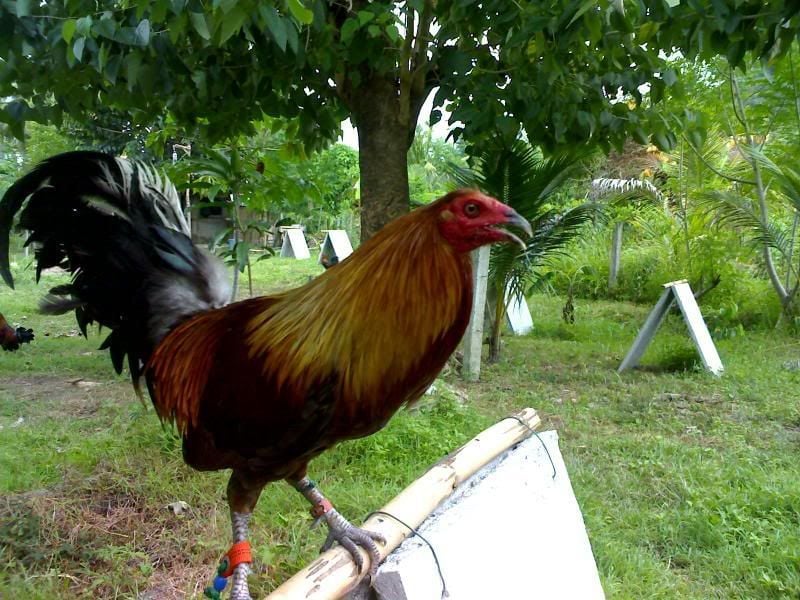
Suboptimal performance of exotic captive Galliforms, managed following routine protocols developed for domestic poultry, pointed towards feed management and nutrition as major underlying factors that could be improved as a means of preventive health care. An ultimate goal of meeting both physiological (nutrition) and psychological (feeding) needs of these special species, through detailed attention to appropriate ingredients, foraging behaviors, and the environment, led to development of the Resolution Kibbles and Farmers Helper Animal Nutrition products. Lessons learned from nature were integrated with help from a team of professionals with expertise in Nutrition, Ecology, Captive Husbandry, Behavior, Feed Production, and Marketing; products were field-tested and formulations revised based on bird response(s). ForageCakes, Hunter Kibble, Golden Egg Ameliorated Suet Nugget, and Ultra Kibble Supplement contain natural ingredients with nutrient profiles reflected in free-range foraging activities. Use of these products in feeding has, in some cases, resulted in a 50% reduction in typical pellet/crumble ration use, as well as production of higher quality and better-colored egg yolks.
Farmers Helper Suggestions for a cleaner and more economic poultry yard:
1. Never feed poultry or gamebirds on the ground. Place no-tip bowls on elevated tables that have been covered with inexpensive, and easily cleaned tablecloth.
2. Place feed in deep dishes on a bed of oystershell and sand.
3. Sterilize water containers every weekend
Last edited:


